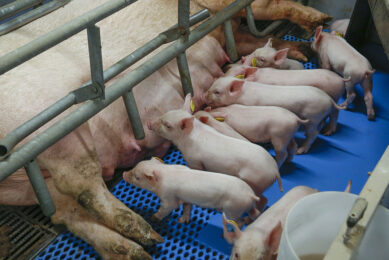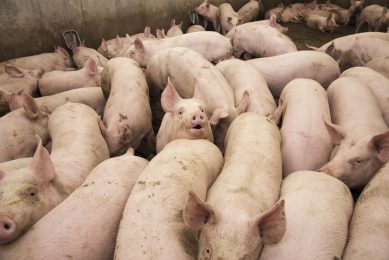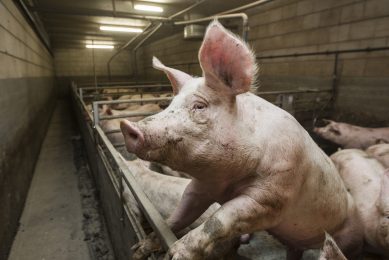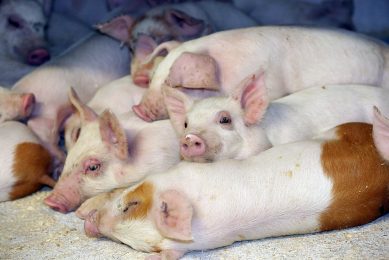What the textbooks don’t tell you about… Operating curtain-sided buildings

In the previous column (Pig Progress 28.06) I described the basics of this system of ventilation which is in my opinion not at all well covered in textbooks. Nevertheless it is growing in popularity because it looks cheaper than most when many producers do not care to use some of the latest technology described below. Nevertheless again, to judge from my list of ‘call-outs’ over the past ten years caused by problems from poor operation based on minimal investment, some thoughts which are not (yet) in the textbooks seem to be needed.
Automatic operation – not manual
No stockperson, however diligent can keep pace with daily temperature changes. Most manual systems are adjusted twice a day which is quite insufficient. Even if further changes are made, this is still not enough to keep pace with changes in weather outside. An automatic system makes a minimum of 30 changes across 24 hours. Does this frequent adjustment matter? I have recorded growth rate on three growout farms when the producers bit the bullet and changed to a quartiled automated system from a simple – if dedicated manual set-up, see Table 1. Days to slaughter fell by three to six days from the end of the nursery periods (averaging 4.1 days). Figure 1 illustrates what happens.
No stockperson, however diligent can keep pace with daily temperature changes. Most manual systems are adjusted twice a day which is quite insufficient. Even if further changes are made, this is still not enough to keep pace with changes in weather outside. An automatic system makes a minimum of 30 changes across 24 hours. Does this frequent adjustment matter? I have recorded growth rate on three growout farms when the producers bit the bullet and changed to a quartiled automated system from a simple – if dedicated manual set-up, see Table 1. Days to slaughter fell by three to six days from the end of the nursery periods (averaging 4.1 days). Figure 1 illustrates what happens.
Quartile the building
The wind can change through most degrees of the compass in one week and the sun moves across the sky in one day between 45 (winter) and 190 degrees (summer); the wind, especially if cold, and the sun’s rays, especially in hot weather, can have different temperature influences on any building – on either side as well as at either end. But if the piggery is theoretically divided into four quarters, then with separate sensors and motors serving each quarter and controlling four curtains, these variations can better be accommodated than current systems which have just a curtain down one side. Figure 2 shows the principle.
The wind can change through most degrees of the compass in one week and the sun moves across the sky in one day between 45 (winter) and 190 degrees (summer); the wind, especially if cold, and the sun’s rays, especially in hot weather, can have different temperature influences on any building – on either side as well as at either end. But if the piggery is theoretically divided into four quarters, then with separate sensors and motors serving each quarter and controlling four curtains, these variations can better be accommodated than current systems which have just a curtain down one side. Figure 2 shows the principle.
Does quartiling pay?
Taken from a client’s performance records in 1989, Table 1 suggests, even though in this case the cost of quartiling over a quote for a two-curtain installation was 2.3 times more. Figure 3, from measurements I took on this farm both on frosty but still days, shows how quartiling – in this case – evened out the temperature gradient across the pigs housed at one time. In more extreme outside temperatures/cold winds the differences could be much greater.
Taken from a client’s performance records in 1989, Table 1 suggests, even though in this case the cost of quartiling over a quote for a two-curtain installation was 2.3 times more. Figure 3, from measurements I took on this farm both on frosty but still days, shows how quartiling – in this case – evened out the temperature gradient across the pigs housed at one time. In more extreme outside temperatures/cold winds the differences could be much greater.
Two final suggestions from my visits
Do not exceed a 40 metre-run off one motor (actuator) and have the blinds fit snugly in a slot. The sides should ‘fold’ into a box, or if on rollers, rise and fall in a narrow slot – both are to reduce draughts and vital in smaller pigs. Louvre systems seems good but are much more expensive. Yes, all these suggestions cost money but the paybacks are usually under a year. Should you employ a ventilation specialist? Definitely, as choice of the system controller and placing of the sensors are critical and is well worth the money, let alone peace of mind.
Do not exceed a 40 metre-run off one motor (actuator) and have the blinds fit snugly in a slot. The sides should ‘fold’ into a box, or if on rollers, rise and fall in a narrow slot – both are to reduce draughts and vital in smaller pigs. Louvre systems seems good but are much more expensive. Yes, all these suggestions cost money but the paybacks are usually under a year. Should you employ a ventilation specialist? Definitely, as choice of the system controller and placing of the sensors are critical and is well worth the money, let alone peace of mind.











